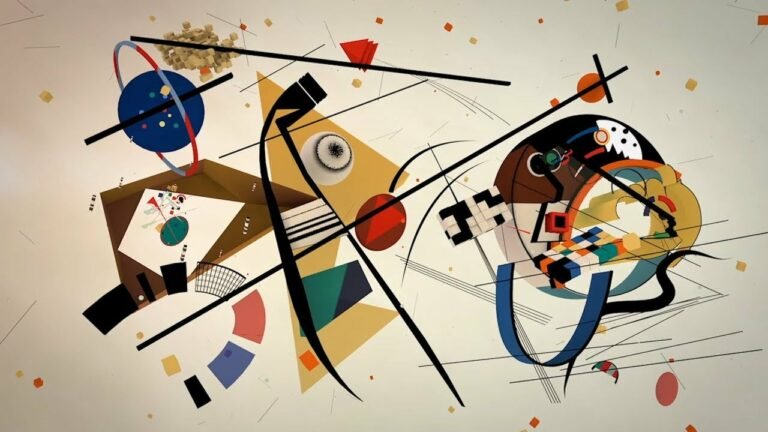
Unleashing Creativity: 21 Reasons Every Kid Should Take an Art Class
Hey there, parents, guardians, and young artists-to-be! Today, let’s embark on an exciting journey into the vibrant world of art classes. As an advocate for creativity and education, I’m thrilled to share with you 21 compelling reasons why enrolling your child in an art class is an investment in their holistic development:
-
Creative Expression: Art classes provide a canvas for children to express themselves freely, fostering creativity and imagination.
-
Confidence Boost: As kids explore different artistic techniques and see their skills improve, they gain confidence in their abilities both within and outside the art studio.
-
Fine Motor Skills Enhancement: From wielding a paintbrush to sculpting with clay, art classes offer hands-on activities that help refine fine motor skills essential for various tasks in life.
-
Critical Thinking Development: Engaging in art encourages children to think critically, make decisions, and solve problems creatively, skills that are valuable in all aspects of life.
-
Cultural Appreciation: Through art, kids can explore diverse cultures, traditions, and historical periods, gaining a deeper understanding and appreciation of the world around them.
-
Stress Relief: Art provides a therapeutic outlet for children to relax, unwind, and release pent-up emotions in a constructive manner.
-
Communication Skills Improvement: Whether through visual storytelling or discussing their artwork with peers, art classes help children develop effective communication skills.
-
Attention to Detail: Paying attention to detail is crucial in art, and practicing this skill in class can translate to improved focus and attention in other areas of life.
-
Problem-Solving Practice: Art often involves experimentation and overcoming challenges, teaching kids to approach problems with creativity and resilience.
-
Emotional Intelligence Growth: Through art, children learn to identify, process, and express their emotions in healthy ways, fostering emotional intelligence and self-awareness.
-
Teamwork and Collaboration: Many art projects require collaboration, promoting teamwork, cooperation, and social skills development among children.
-
Visual-Spatial Skills Enhancement: Art classes help kids develop a better understanding of spatial relationships, proportions, and perspective, skills that are beneficial in fields such as mathematics and engineering.
-
Cognitive Development: Engaging in art stimulates cognitive functions such as memory, attention, and visual processing, supporting overall cognitive development.
-
Appreciation for Beauty: By creating and observing art, children develop an appreciation for beauty and aesthetics, enriching their sensory experiences.
-
Cultural Expression: Art allows children to express their cultural identity and personal experiences, fostering a sense of belonging and pride.
-
Resilience Building: In art, there are no mistakes—only opportunities for growth. Children learn to embrace imperfections and persevere through challenges, building resilience and confidence.
-
Divergent Thinking Promotion: Art encourages divergent thinking, or the ability to generate multiple solutions to a problem, promoting creativity and innovation.
-
Self-Discovery: Through art-making, children explore their interests, strengths, and passions, fostering self-discovery and personal growth.
-
Appreciation for Diversity: Art classes celebrate diversity in styles, techniques, and perspectives, encouraging children to embrace differences and respect others’ viewpoints.
-
Lifelong Passion Cultivation: Many adults trace their love for art back to childhood art classes. By exposing children to art at a young age, you may ignite a lifelong passion for creativity and self-expression.
-
Joyful Learning: Last but certainly not least, art classes make learning fun! Children eagerly look forward to exploring new materials, techniques, and ideas, making every class an adventure.
In conclusion, enrolling your child in an art class isn’t just about creating beautiful artwork—it’s about nurturing their creativity, boosting their confidence, and enriching their lives in countless ways. So, why wait? Let’s unleash the artist within every child and watch them flourish on their creative journey!

Cultivating Creativity: The Case for Enrolling Kids in Art Classes
In the bustling world of education, where academic achievements often take precedence, the importance of nurturing creativity tends to be overshadowed. However, as a passionate advocate for both education and creativity, I firmly believe that enrolling children in art classes is not just beneficial but essential for their holistic development.
In today’s fast-paced society, where technological advancements dominate, the value of creative expression cannot be overstated. Art classes provide a unique platform for children to explore their imagination, experiment with different mediums, and express themselves in ways that transcend language barriers. Whether it’s painting, sculpting, or digital design, each artistic endeavor offers a gateway to self-discovery and personal growth.
One of the most significant benefits of art classes is the boost in confidence they provide. As children engage in various artistic techniques and see their skills evolve over time, they gain a sense of pride and accomplishment that transcends the boundaries of the studio. This newfound confidence extends beyond the realm of art, empowering children to tackle challenges with resilience and self-assurance.
Furthermore, art classes play a crucial role in enhancing fine motor skills and hand-eye coordination. From wielding a paintbrush to shaping clay, each artistic activity requires precision and control, honing essential motor skills that are vital for tasks ranging from handwriting to playing musical instruments.
Moreover, the creative process inherent in art fosters critical thinking and problem-solving skills. As children conceptualize, plan, and execute their artistic visions, they learn to think outside the box, innovate, and adapt to unexpected challenges—a skill set that is invaluable in navigating the complexities of the modern world.
Art classes also serve as a gateway to cultural appreciation and understanding. Through the exploration of different artistic styles, traditions, and cultural narratives, children gain a deeper appreciation for diversity and develop empathy for people from different backgrounds—a crucial step towards building a more inclusive and harmonious society.
Additionally, art classes provide a therapeutic outlet for children to express their emotions and alleviate stress. Whether it’s painting their feelings on canvas or sculpting their worries away, art offers a safe space for children to process their emotions and cultivate emotional resilience—an essential skill for navigating the ups and downs of life.
In conclusion, the benefits of enrolling children in art classes extend far beyond the confines of the studio. From fostering creativity and confidence to enhancing critical thinking and emotional intelligence, art education plays a pivotal role in shaping well-rounded individuals who are equipped to thrive in an increasingly complex and interconnected world. As parents, educators, and advocates for children’s well-being, let us recognize the transformative power of art and ensure that every child has the opportunity to unleash their creative potential and flourish on their artistic journey.
